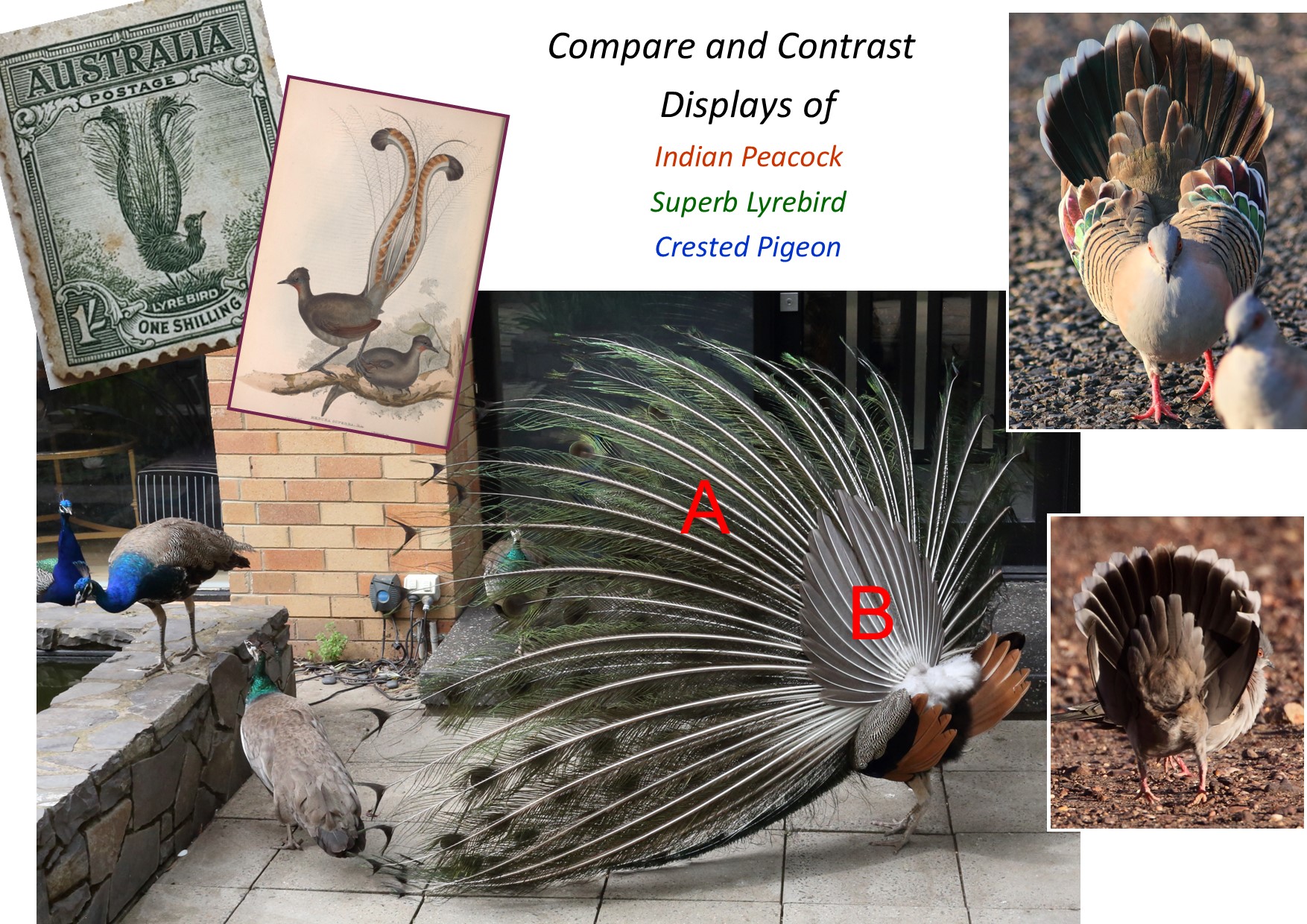Philip correctly raises the issue whether the ‘tail’ of the peacock is really a tail. It seems that what is conventionally called a tail is better referred to as a train, being greatly enlarged upper
tail coverts (A in below picture) together with main tail feathers (rectrices (B in below picture). The best discussion I can find on this is at
https://journals.plos.org/plosone/article?id=10.1371/journal.pone.0152759
The train is often held erect, near vertical, in a static display before the pre-copulatory train-vibrating display. From captive ornamental peacocks and their depiction, that static display was
familiar to Europeans. This led to misrepresentation of the lyrebird display by illustrators up to the 1932 postage stamp, and beyond. The display plumes of the lyrebird are modified main tail feathers. In display they are flopped forward or sideways. There
is no near-vertical static stage like the peacock’s. The Crested Pigeon sometimes gives a near-vertical display using its normal-type tail feathers.

From: Philip Veerman <>
Sent: Thursday, August 15, 2024 12:01 PM
To: 'Geoffrey Dabb' <>
Cc:
Subject: RE: [Canberrabirds] Suggestion department
Funny picture and great suggestion. I suspect these are young males, maybe growing their first set of immature train feathers. As I think, if they were adults,
the eye spots would be present (I think I only see one). Anyway, it highlights that the so called tail of peacocks is not the tail. This picture features the tail (usually hidden except in this posture), which supports the showy feathers of the rump and lower
back.
Philip
From: Canberrabirds
On Behalf Of Geoffrey Dabb via Canberrabirds
Sent: Thursday, 15 August, 2024 9:26 AM
To: Canberrabirds
Subject: [Canberrabirds] Suggestion department
From Narrabundah-Griffith Olympic Games Suggestions Committee

